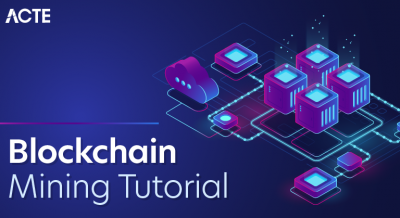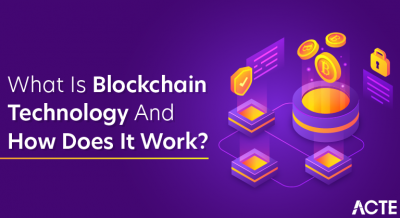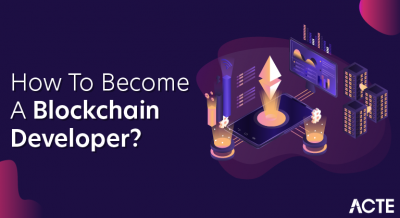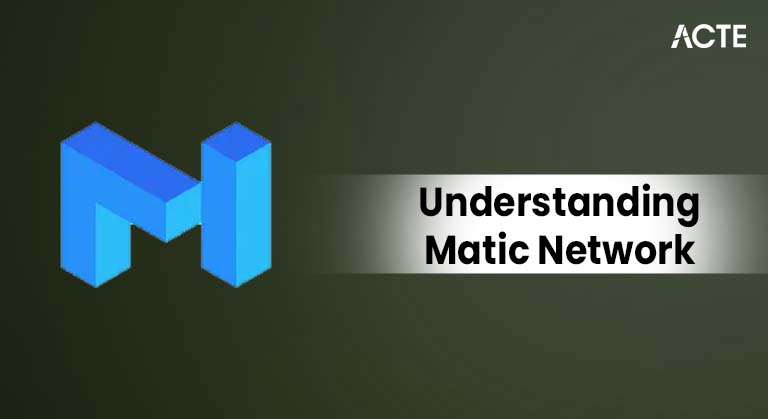
- Introduction to Matic Network
- Evolution into Polygon
- Key Features and Architecture
- Polygon PoS Chain Explained
- Use Cases and Ecosystem Growth
- Partnerships and Developer Adoption
- Challenges and Future Roadmap
- Final Thoughts The Role of Polygon in Web3
Introduction to Matic Network
The blockchain industry has experienced exponential growth over the past decade, transforming how we think about digital trust, finance, and applications. At the forefront of this revolution is Ethereum, a blockchain platform that introduced smart contracts, which are self-executing contracts with the terms directly written into code. Ethereum’s innovation laid the groundwork for decentralized applications (dApps), enabling a new wave of services from decentralized finance (DeFi) to digital collectibles (NFTs). However, as Ethereum’s popularity surged, it began to face significant challenges. The network struggled with high transaction fees and congestion, causing delays and limiting scalability. This bottleneck highlighted the urgent need for solutions that could enhance Ethereum’s performance without compromising its core principles of security and decentralization, a challenge often explored in Blockchain Training. In response to these issues, Matic Network was launched in 2017 as a Layer 2 scaling solution designed to improve Ethereum’s usability. The founders, Jaynti Kanani, Sandeep Nailwal, and Anurag Arjun, set out to create a solution that would deliver faster and more affordable transactions while maintaining robust security. Matic’s approach was innovative. It utilized sidechains and plasma technology to process transactions off the Ethereum main chain, reducing congestion and lowering costs. This approach allowed Matic to offer a seamless experience for users and developers alike. Initially seen as a niche project, Matic Network quickly garnered attention in the crypto community due to its technical sophistication and practical impact. It has since become a vital component in the Ethereum ecosystem, powering numerous dApps and helping to drive mainstream blockchain adoption. Matic’s evolution reflects the dynamic nature of the blockchain space and the ongoing quest to solve the scalability puzzle.
Do You Want to Learn More About Blockchain? Get Info From Our Blockchain Training Course Today!
Evolution into Polygon
By early 2021, the Matic team realized that solving Ethereum’s scalability problem required a broader and more flexible approach. This realization led to a major rebranding and a significant expansion of the project’s scope. Matic Network became Polygon. The rebranding was not merely cosmetic; it signaled a fundamental shift from being a single Layer 2 scaling solution to becoming a multi-chain ecosystem. Often described as the “Internet of Blockchains for Ethereum,” Polygon set out to create a framework for building and connecting multiple Ethereum-compatible blockchain networks, which is essential to What is Web 3 Explained. Polygon’s new vision was to enable seamless interoperability between different chains while preserving Ethereum’s security and decentralization. The rebranding brought with it the introduction of new technologies and an expanded range of use cases. Importantly, the original MATIC token was retained and repurposed as the native utility and governance token for the Polygon ecosystem. This allowed token holders to participate in decision-making processes and helped foster a vibrant community around the platform. This strategic pivot enabled Polygon to attract a diverse group of developers, enterprises, and DeFi projects who were eager to build and scale on Ethereum without sacrificing compatibility or security.

By providing an adaptable and scalable infrastructure, Polygon helped address Ethereum’s persistent challenges of high fees and network congestion in a more holistic way. Since the rebranding, Polygon has grown rapidly, becoming one of the leading platforms for scalable blockchain development. Its multi-chain approach has positioned it as a vital piece in the Ethereum ecosystem, driving innovation and expanding the possibilities of decentralized applications. Polygon’s journey demonstrates how adaptability and vision can reshape the future of blockchain technology.
Key Features and Architecture
- Modular and Flexible Architecture: Polygon offers a highly modular framework that supports both standalone and secured chains. Developers can choose between higher scalability or stronger security, depending on the use case.
- Ethereum Layer 2 Compatibility: At its foundation, Polygon is designed to scale Ethereum by offering Layer 2 solutions that reduce congestion and fees. This compatibility ensures that applications benefit from Ethereum’s robust security while enhancing speed and efficiency through Polygon’s infrastructure.
- Developer-Friendly Environment: Polygon is fully compatible with the Ethereum Virtual Machine (EVM), allowing developers to seamlessly port over existing Ethereum dApps, showcasing the Power of Tron Blockchain.
- High Throughput and Low Transaction Costs: Polygon’s Proof-of-Stake (PoS) chain can process over 65,000 transactions per second. With transaction fees as low as $0.0001, it becomes a practical platform for high-volume consumer applications such as gaming, DeFi, and NFTs.
- Security Infrastructure: Polygon uses Ethereum as its settlement layer while offering flexible security models. It includes validator sets and customizable security protocols to meet the specific needs of different applications and network participants.
- Cross-Chain Interoperability: Polygon is built to prioritize Ethereum but also supports connectivity with other chains. Through bridges and multiple rollup technologies, it allows assets and data to move seamlessly between networks.
- Ecosystem Vision: Polygon aims to be the backbone of a multi-chain future, enabling interoperability, scalability, and decentralization at scale for the broader Web3 ecosystem.
- Overview of Polygon PoS Chain: The Polygon PoS Chain is one of the most widely adopted implementations of the Polygon framework. It serves as a commit chain to Ethereum, providing users with fast, low-cost, and secure blockchain transactions while maintaining compatibility with Ethereum.
- How It Works Transaction Flow: Users initiate transactions on the Polygon PoS Chain. These transactions are collected and validated by network participants, a process commonly explained in Blockchain Training.
- Checkpointing Mechanism: Polygon uses a checkpointing process where a snapshot of the PoS chain is regularly submitted to Ethereum. This ensures that all activity on the Polygon chain is backed by Ethereum’s security, making it a hybrid model that balances speed and trust.
- Validator System and Role: Validators are essential to the Polygon PoS network. They stake MATIC tokens to participate in the consensus process. In return, they receive transaction fees and MATIC rewards. Their role is to validate transactions, produce blocks, and secure the network.
- Consensus and Security: The chain operates on a proof-of-stake consensus model, which promotes decentralization and energy efficiency. Validators are incentivized to act honestly, and the system includes penalties for malicious behavior, ensuring resilience against attacks.
- Benefits of the PoS Chain: Key advantages include near-instant transaction finality, very low fees which enable microtransactions, and strong Ethereum integration that facilitates easy asset transfers and security layering.
- dApp Adoption: The Polygon PoS Chain powers a growing number of decentralized applications, including major projects like QuickSwap, Aavegotchi, and many others that rely on its scalability and affordability.
- Strategic Ecosystem Growth: Polygon’s rapid rise is not only due to its technical capabilities but also its strategic focus on building a strong ecosystem. It has formed key partnerships across both the crypto sector and traditional industries to drive adoption and utility.
- Stripe Integration: One of the most notable collaborations came when Stripe, a global payments giant, chose Polygon to enable crypto payouts for content creators in select countries. This marked a major step toward mainstream crypto adoption using Polygon’s low-cost infrastructure.
- Adobe and Behance Partnership: Adobe integrated Polygon-based NFTs into Behance, its creative platform. This allows artists and designers to mint and showcase NFTs with minimal gas fees, directly reaching a broader audience through a familiar and trusted interface, as explained in the Guide To Building Quorum Blockchain using Docker.
- Meta and Instagram Support: Meta announced support for NFTs on Instagram using Polygon’s network. This opened the door for millions of users to engage with Web3 content on one of the world’s largest social media platforms, significantly boosting visibility for Polygon-based assets.
- Developer Ecosystem Polygon Studios: Polygon Studios was launched to focus on gaming and NFT development. It supports developers with resources, marketing, and partnerships, accelerating innovation in entertainment and digital ownership on the platform.
- Community and Funding Polygon DAO: Polygon DAO serves as a decentralized hub to empower community builders. It facilitates collaboration, governance, and funding for early-stage projects that contribute to the ecosystem’s growth.
- Grants and Developer Adoption: Through its Grants Program, Polygon provides financial support to promising projects. These initiatives have led to the launch of thousands of decentralized applications, making Polygon one of the most active developer communities in the Ethereum ecosystem.
Would You Like to Know More About Blockchain? Sign Up For Our Blockchain Training Course Now!
Polygon PoS Chain Explained
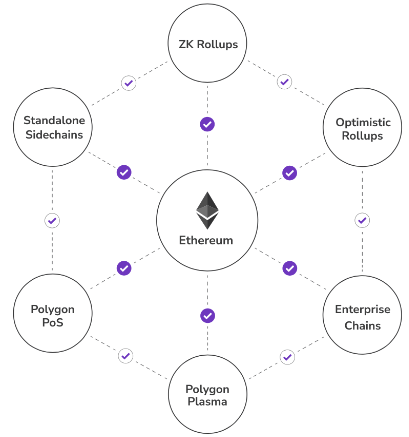
Use Cases and Ecosystem Growth
Polygon’s fast, affordable, and Ethereum-compatible platform has attracted a diverse range of projects spanning multiple industries. One of the most prominent use cases is decentralized finance, or DeFi. Leading DeFi protocols such as Aave, Curve Finance, and SushiSwap have chosen to deploy on Polygon in order to avoid the high gas fees commonly associated with Ethereum. By doing so, these projects maintain full composability and security while offering users a smoother and more cost-effective experience. In addition to DeFi, Polygon has become a vibrant hub for non-fungible tokens (NFTs) and blockchain gaming. Popular projects like Zed Run, Decentral Games, and Cometh utilize Polygon’s low transaction costs to handle the high volume of interactions typical in gaming and NFT marketplaces, allowing for more scalable and accessible experiences while maintaining Blockchain Security. Polygon also supports decentralized autonomous organizations (DAOs) that manage everything from protocol upgrades to treasury spending. The platform’s low transaction fees encourage broader and more democratic participation by reducing the cost barrier for voting and governance activities. On the enterprise side, Polygon has drawn interest from major companies looking to leverage blockchain technology for supply chain management, tokenization, and ensuring data integrity. Firms such as Infosys and Deloitte have explored Polygon-based solutions to innovate within their industries. Furthermore, Polygon has made a strong commitment to sustainability by pledging to become carbon negative by the end of 2023. This initiative has attracted developers and investors who prioritize environmentally responsible blockchain technologies. Overall, Polygon’s versatile platform continues to empower a wide array of applications, positioning it as a leading choice for scalable, secure, and sustainable blockchain solutions.
Partnerships and Developer Adoption
Challenges and Future Roadmap
Despite its impressive growth and adoption, Polygon faces several key challenges that could impact its future trajectory. One major challenge is increasing competition. Other Layer 2 scaling solutions such as Arbitrum, Optimism, and zkSync are also gaining momentum in the Ethereum ecosystem. Each of these competitors offers unique advantages and technologies, pushing Polygon to continuously innovate and improve to maintain its leading position. Another challenge relates to security and decentralization. Although Polygon’s Proof-of-Stake (PoS) chain has performed reliably, some critics argue that it is less decentralized than Ethereum’s mainnet. To address these concerns, Polygon is actively working on increasing validator diversity and improving transparency, which are crucial for bolstering trust and resilience, illustrating The Role of Merkle Trees in Blockchain. Additionally, Polygon’s ambitious multi-chain vision introduces complexity. Managing multiple technologies including PoS, zk-Rollups, and Supernets creates onboarding and governance challenges for developers and users alike. The project needs to simplify the developer experience while preserving the benefits of its diverse and scalable ecosystem. To meet these challenges, Polygon has outlined several key roadmap initiatives. One major milestone was the launch of zkEVM in early 2023. This technology offers native Ethereum compatibility combined with zero-knowledge proof scalability, significantly enhancing performance and security. Looking ahead, Polygon 2.0 aims to unify its various chains into a single, seamless protocol that enables effortless liquidity flow and cross-chain interoperability. Another important development is the introduction of Supernet’s dedicated, customizable chains designed for enterprises and dApps. These Supernets provide sovereign networks with plug-and-play functionality, giving projects more control and flexibility. Overall, Polygon’s roadmap reflects its commitment to evolving with the needs of the blockchain community while tackling challenges head-on.
Are You Preparing for Blockchain Jobs? Check Out ACTE’s Blockchain Interview Questions and Answers to Boost Your Preparation!
Final Thoughts The Role of Polygon in Web3
Polygon started as a humble scaling solution for Ethereum but has since transformed into one of the most ambitious and influential platforms in the Web3 space. Its success can be attributed to several key factors. First, Polygon’s ability to innovate quickly and adapt to the ever-changing blockchain landscape has set it apart from many competitors. By continuously developing new technologies such as its Proof-of-Stake (PoS) chain and the groundbreaking zkEVM, Polygon has expanded beyond simple Layer 2 scaling into a full-fledged multi-chain ecosystem. Second, Polygon has fostered a developer-friendly environment that encourages experimentation and growth. Its strong focus on compatibility with Ethereum means that developers can easily migrate or build new projects on Polygon without having to learn an entirely new system, a key topic in Blockchain Training. This seamless integration has helped attract a wide range of decentralized applications, from DeFi protocols to NFT marketplaces and enterprise solutions. As the Ethereum ecosystem continues to expand, the demand for scalable, efficient, and interoperable Layer 2 and multi-chain solutions will only increase. Polygon’s diverse technology stack and vision position it well to meet these evolving needs. Whether you are a developer aiming to build the next DeFi unicorn, an enterprise exploring blockchain technology for the first time, or an investor seeking promising opportunities in crypto, Polygon offers a versatile and robust platform worth serious consideration. In an industry where scalability often comes at the cost of decentralization or security, Polygon strives to strike a balance. It is more than just a blockchain network; it represents a forward-thinking vision for the future of Web3. By combining speed, affordability, and strong Ethereum compatibility, Polygon is set to play a central role in shaping the next generation of decentralized applications and blockchain innovation.


